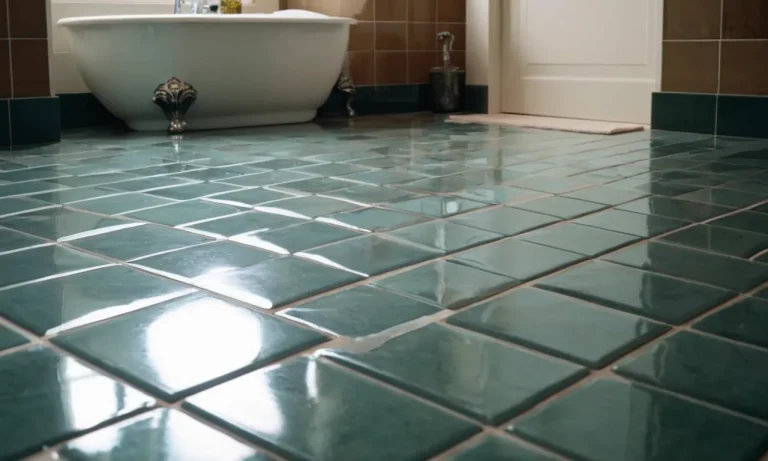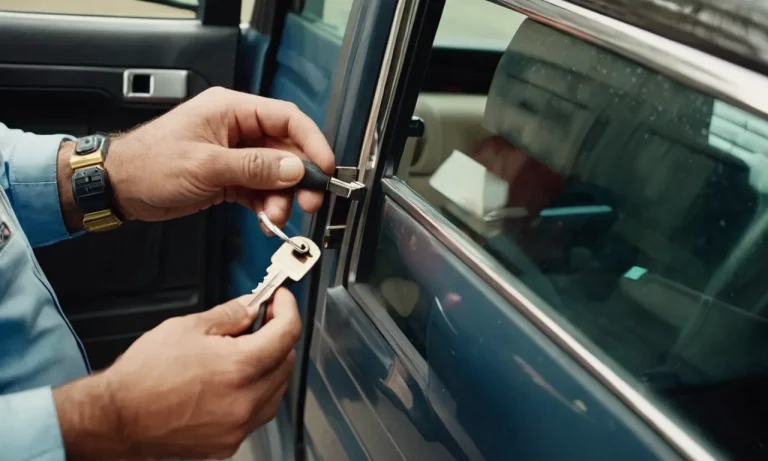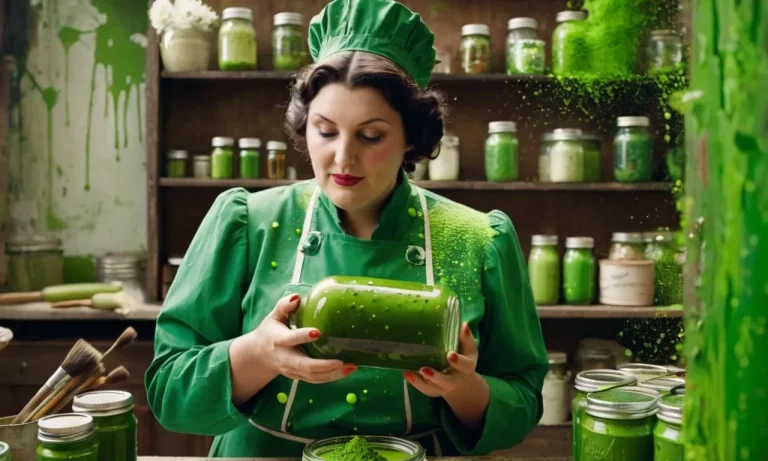How Long Does Epoxy Flooring Take To Dry?
Installing an epoxy floor coating can provide a durable, attractive flooring solution for garages, basements, warehouses, and commercial spaces. However, a key question many people have is just how long does it take for epoxy floors to fully cure and dry?
If you need a quick answer, here’s the gist: depending on the product used and conditions, epoxy floors can take anywhere from 8-72 hours to dry enough for light foot traffic, and a full 7 days or more to reach full hardness and durability.
Read on as we dive into the details surrounding epoxy floor dry times. We’ll look at the different stages of the curing process, factors that affect dry times, how to speed up or slow down the process, and what you can and can’t do during the curing period.
What Is Epoxy Flooring?
Epoxy flooring is a type of flooring that is made from a mixture of resin and hardener. It is a popular choice for industrial and commercial spaces due to its durability and resistance to chemicals, stains, and impact.
Epoxy flooring is also known for its glossy and seamless finish, making it an attractive option for homeowners as well.
When the resin and hardener are combined, a chemical reaction occurs, resulting in a rigid plastic material that bonds tightly to the underlying surface. This creates a strong and durable flooring surface that can withstand heavy foot traffic and other forms of wear and tear.
One of the key benefits of epoxy flooring is its versatility. It can be applied to a variety of surfaces, including concrete, wood, and tiles. This makes it suitable for a wide range of applications, from garage floors and warehouses to hospitals and retail stores.
Additionally, epoxy flooring comes in a range of colors and finishes, allowing for customization to match the aesthetic of any space. It can also be combined with other materials, such as quartz or metallic flakes, to create unique and eye-catching designs.
Stages of Epoxy Floor Curing and Drying
Epoxy flooring is a popular choice for its durability, resistance to chemicals, and aesthetic appeal. However, one common question that arises is how long it takes for epoxy flooring to dry. The drying process of epoxy flooring can be divided into three main stages: the Initial Dry to Touch Stage, the Functional Cure Stage, and the Full Cure Stage.
Initial Dry to Touch Stage
During the Initial Dry to Touch Stage, the epoxy coating will typically dry enough to be touched without leaving any residue on your fingers. This stage usually occurs within 6 to 12 hours after the epoxy application, but it can vary depending on factors such as the type of epoxy used, temperature, and humidity levels.
It’s important to note that while the epoxy may be dry to touch, it is still not fully cured and should not be subjected to heavy traffic or other stresses.
Functional Cure Stage
The Functional Cure Stage is the point at which the epoxy flooring becomes strong enough to withstand light foot traffic and other light loads. This stage generally occurs within 24 to 48 hours after the epoxy application.
However, it’s important to follow the manufacturer’s recommendations for the specific epoxy product you are using, as curing times can vary. At this stage, the epoxy is still not fully cured and may be vulnerable to certain chemicals or heavy impacts.
Full Cure Stage
The Full Cure Stage is when the epoxy flooring reaches its maximum hardness and chemical resistance. This stage typically occurs within 7 to 14 days after the epoxy application, but again, the exact time can vary based on the specific epoxy product and environmental conditions.
Once the epoxy has fully cured, it will provide a durable, long-lasting surface that is resistant to stains, chemicals, and wear and tear.
It’s important to note that these timeframes are general guidelines, and it’s always best to consult the manufacturer’s instructions for the specific epoxy product you are using. Factors such as temperature, humidity, and the thickness of the epoxy coating can all impact the drying and curing time.
Additionally, it’s crucial to allow the epoxy to dry and cure in a well-ventilated area to ensure proper curing and to avoid any potential health risks associated with inhaling epoxy fumes.
If you’re considering installing epoxy flooring, it’s recommended to hire a professional who has experience in epoxy floor installations. They can provide guidance on the specific curing and drying times for your particular project, ensuring the best results.
Factors That Affect Epoxy Cure Times
Type of Epoxy Used
The type of epoxy used is a significant factor in determining the cure time. Different types of epoxy have varying chemical compositions and curing agents, which can influence the drying process. Some epoxies are designed to cure quickly, while others may take a longer time to fully dry and harden.
It is important to carefully read the manufacturer’s instructions and choose the right epoxy for your specific project.
Temperature and Humidity
The temperature and humidity levels in the environment where the epoxy is applied can greatly impact the curing time. In general, epoxy cures faster in warmer temperatures and lower humidity. Warmer temperatures accelerate the chemical reaction that causes the epoxy to harden, while higher humidity can slow down the process.
It is recommended to work in an environment with a temperature between 60°F and 90°F (15°C and 32°C) and a humidity level below 85% for optimal curing results.
Application Thickness
The thickness of the epoxy application also affects the drying time. Thicker layers of epoxy take longer to cure compared to thin coats. This is because the chemical reaction needs more time to occur throughout the entire volume of the epoxy.
If you apply a thick layer of epoxy, it may take several days or even weeks to fully dry. On the other hand, thin coats of epoxy can dry within a few hours.
It is worth noting that these factors are interrelated, and changes in one factor can impact the others. For example, a higher temperature can lead to faster curing, but it may also increase the evaporation rate, affecting the humidity level.
Therefore, it is important to consider all these factors when planning a project involving epoxy flooring.
For more information on epoxy flooring and its curing process, you can visit www.epoxy.com or www.concretenetwork.com.
Speeding Up or Slowing Down Cure Time
When it comes to epoxy flooring, the drying time, also known as cure time, can vary depending on several factors. However, there are ways to speed up or slow down the curing process to meet specific needs.
Speeding Up Cure Time
If you’re looking to expedite the drying process of your epoxy flooring, there are a few strategies you can employ:
- Optimal temperature: Maintaining the ideal temperature in the area where the epoxy is applied can help accelerate the curing process. Higher temperatures generally speed up the drying time, so keeping the space warm can be beneficial.
However, it’s important to note that excessively high temperatures can lead to other issues, such as bubbling or uneven curing.
- Proper ventilation: Ensuring good airflow through the space can help remove excess moisture and aid in the drying process. Using fans or opening windows can promote faster curing.
- Use of accelerators: Some epoxy manufacturers offer accelerators that can be added to the epoxy mixture to speed up the curing time. These additives can be particularly useful in colder environments or when time is of the essence.
Slowing Down Cure Time
On the other hand, there may be instances where you’d like to slow down the curing process:
- Cooler temperatures: Lowering the temperature in the area where the epoxy is being applied can extend the drying time. This can be beneficial in warmer climates or when working with larger areas that require more time to complete.
- Humidity control: High levels of humidity can cause epoxy to cure faster. If you want to slow down the drying process, consider using dehumidifiers or other moisture control methods to reduce the humidity in the space.
- Choosing a slower-curing epoxy: Not all epoxy products dry at the same speed. Some epoxy formulations are specifically designed to have a longer curing time, which can be advantageous in certain situations.
It’s important to note that while these strategies can help speed up or slow down cure time, it’s always best to follow the manufacturer’s instructions and recommendations for optimal results. Additionally, factors such as humidity levels, temperature, and the size of the area being coated can also impact the drying time.
For more information on epoxy flooring and its curing process, you can visit websites like epoxy.com or concretenetwork.com, where you can find detailed guides and expert advice.
What You Can and Can’t Do During Curing
Once you have applied epoxy flooring, it’s important to understand the curing process and what activities are safe to do during this time. Curing refers to the time it takes for the epoxy to fully harden and reach its maximum strength.
While the exact drying time can vary depending on factors such as temperature and humidity, there are general guidelines to follow.
Light Foot Traffic
During the initial stages of curing, epoxy flooring can typically withstand light foot traffic. This means you can walk on the surface, but it’s important to be cautious and avoid dragging or scraping any heavy objects.
It’s also a good idea to wear protective shoe covers to prevent any debris or dirt from being tracked onto the epoxy. This initial stage usually lasts for about 24-48 hours.
Vehicles and Heavy Equipment
It’s important to keep vehicles and heavy equipment off the epoxy flooring during the curing process. The weight and movement of these objects can cause damage to the partially cured epoxy, resulting in cracks or indentations.
It’s recommended to wait at least 72 hours before allowing vehicles or heavy equipment on the surface. This will ensure that the epoxy has fully cured and is able to withstand the weight and pressure.
Cleaning and Maintenance
While the epoxy is curing, it’s important to avoid any cleaning or maintenance activities that could damage the surface. This includes using harsh chemicals or abrasive cleaning tools. Instead, use a mild detergent and a soft mop or cloth to clean the floor gently.
Once the epoxy has fully cured, it becomes highly resistant to chemicals, stains, and abrasions, making it easier to maintain in the long run.
For more detailed information on epoxy flooring and its curing process, you can visit www.epoxycoat.com. Remember to always follow the manufacturer’s instructions for the specific epoxy product you are using, as drying times can vary.
Conclusion
Installing an epoxy coating is a significant project, so it’s understandable to be anxious about getting use of the floor back as soon as possible. However, it’s critical to allow the required curing time for full hardening and durability.
While epoxy chemistry can dry quickly at first, full curing takes days. Be sure to use the recommended product, follow application guidelines, and allow several days before heavy use and cleaning. With some care and patience up front, you’ll gain the benefits of an attractive, robust epoxy floor that will last for years.







